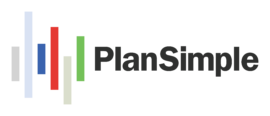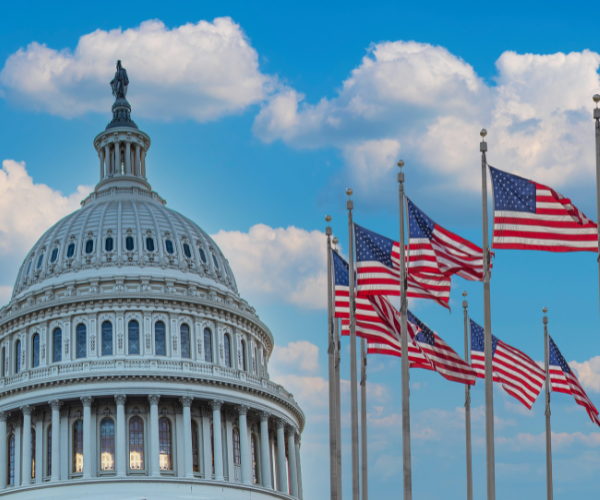1. How does the SECURE 2.0 Act affect my current participants?
Employer Matching Contributions as designated Roth contributions:
An optional provision, which has now been delayed until January 1, 2026. Participants may choose, plan permitting, to treat employer matching and nonelective contributions to qualified 401(a) defined contribution plans, 403(b) plans, and governmental 457(b) plans as designated Roth contributions. This option is also available for matching contributions made on qualified student loan payments. Employer contributions treated as designated Roth contributions must be 100 percent vested to be treated as designated Roth contributions and are not excludable from gross income.
Larger Catch-Up Contributions:
While this provision is optional and not scheduled to go into effect until 2025, participants who reach age 60, 61, 62, and 63 during a given taxable year may make additional catch-up salary deferral contributions to 401(k), 403(b), governmental 457(b), SAR-SEP, SIMPLE IRA, and SIMPLE 401(k) plans. For plans other than SIMPLE plans, eligible participants may contribute up to the greater of $10,000 or 150 percent of the regular catch-up amount for 2024 (indexed). For SIMPLE plans, the maximum catch-up contribution amount is increased to the greater of $5,000 or 150 percent of the regular catch-up amount for 2025 (indexed).
Employer Matching Contributions on Student Loan Payments:
Originally slated to take effect in 2024, this has been delayed until January 1, 2026. However, employers offering 401(k), 403(b), SIMPLE IRA, and governmental 457(b) plans may provide a matching contribution based on a participant’s “qualified student loan payments.” To be considered a qualified student loan payment, the payment must be made by a participant to repay a qualified education loan that was incurred by the participant to pay qualified higher education expenses. In addition, the total amount of the participant’s qualified student loan payments cannot exceed the participant’s compensation or the deferral limit under Internal Revenue Code Section (IRC Sec.) 402(g), whichever is less. The combined total of the participant’s qualified student loan payments and elective deferrals cannot exceed the IRC Sec. 402(g) limit. For an employer contribution to be treated as a matching contribution on a qualified student loan payment, the same eligibility and vesting requirements must apply to the matching contributions made on both the elective deferrals and the qualified student loan payments. Matching contributions on student loan payments must also be made at the same rate as matching contributions on elective deferrals. For ADP testing purposes, employers may test participants who receive matching contributions on qualified student loan payments separately from other participants.
PLESA Emergency Savings Accounts:
Another optional provision set to take effect in 2024, this new emergency savings account will be linked to the Defined Contribution plan. Employers may offer a pension-linked emergency savings account (PLESA) to non-highly compensated employees as part of their 401(k), 403(b), or governmental 457(b) plan. Participants may contribute up to $2,500 or less if dictated by the plan. If the PLESA’s account balance exceeds this amount, the employer may deposit future contributions into the participant’s designated Roth account, or the participant may stop contributing until the account balance falls below the limit. These contributions are designated Roth contributions. If the employer makes matching contributions to the plan, the employee’s contributions to the PLESA must be matched at the same rate as other deferrals—but must not be placed in the PLESA. Employers may allow employees to opt in or may automatically enroll employees, but the automatic deferral rate cannot exceed 3 percent of compensation. Employers must also allow participants to take PLESA distributions at least once a month and may not apply fees or charges solely on the basis of the withdrawal for the first four distributions taken during a plan year.
2. How does the SECURE 2.0 Act affect my terminated with balance participants?
Increased Cash-Out Limits:
When a participant separates from service, the employer may choose to distribute (i.e., cash out) the participant’s vested account balance without consent if the balance is under a certain dollar limit. Currently, employers must directly roll over to an IRA account balances that exceed $1,000—but that do not exceed $5,000, unless directed otherwise by the participant or beneficiary. SECURE 2.0 increases this limit from $5,000 to $7,000.
Delay for RMD’s:
While this change may be relevant to both active and terminated participants, the chances are that those terminated with balances will begin their Required Minimum Distributions to help support retirement income goals. SECURE 2.0 further increases the RMD age from 72 to 73 in 2023, and then to age 75 in 2033 (or the year of retirement, if later, for certain employer plan participants who are not 5 percent owners). Individuals born in 1950 or earlier are unaffected by this change and must continue to take any RMDs due for 2022 and later years.
3. How does the SECURE 2.0 Act affect my new hires?
Mandatory Auto-Enrollment in Retirement Plans:
Mandatory for 2025, this is one of the biggest changes to most plans. Employers with more than 10 employees and who have been in business for three or more years must implement an automatic enrollment provision for a 401(k) or 403(b) plan established on or after December 29, 2022. The initial deferral percentage:
- Must be at least 3 percent but cannot exceed 10 percent.
- Must automatically increase yearly by one percent until reaching at least 10 percent (but not exceeding 15 percent).
- Non-safe harbor plans can’t exceed a 10 percent deferral rate for plan years ending before January 1, 2025.
- Automatically enrolled participants may affirmatively elect to defer a higher or lower percentage or may choose not to defer. This provision does not apply to church or governmental plans.
Accelerated part-time employee participation:
Mandatory for 2025 and will have a big impact on seasonal and part-time workers. For 2021 and later plan years, SECURE 1.0 allowed employees with three consecutive 12-month periods, at least 500 hours of service, and who are age 21 or older to make elective deferrals in their employer’s 401(k) plan. Now, SECURE 2.0 allows otherwise eligible employees to enter their employer’s 401(k) or ERISA-covered 403(b) plan after two consecutive 12-month periods in which they work 500 hours or more. The three-year requirement under SECURE 1.0 applies until the two-year requirement under SECURE 2.0 takes effect in 2025.
4. When should I start making plan amendments or changes?
Even though a number of these provisions aren’t required for a year, maybe two, the process to implement these changes is sometimes cumbersome and requires strategic collaboration between your plan advisor, recordkeeper, and third-party administrator. We encourage all plan sponsors and administrators to start the conversation now and consider auditing your plan design in an effort to align the plan with not only the culture of the company but the new legislation that will invariably force the hand of change.
5. Who will communicate these changes?
Naturally, as the plan administrator or sponsor, you will be bombarded with questions from your participants. For our plans, we help get in front of these questions with strategic and timely communication, in addition to on-site education so your participants can feel comfortable with making any elections or changes to their retirement accounts. If there isn’t a formal communication method in place, we strongly encourage you to contact us to hear more about our service plan.
With the upcoming changes, you might have additional questions. CLICK HERE to make an appointment and we can discuss your specific plan.


